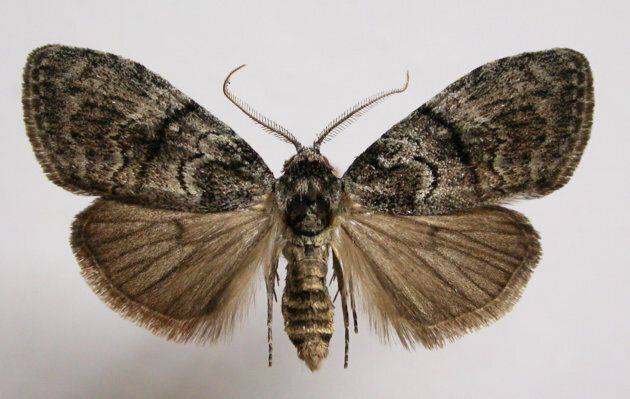As a moth, life as an adult is short -- just seven days long, in fact. So why waste time on a guy who won't put in the time to really listen?
That's the attitude of female gum-leaf skeletoniser moths, according to a new study out of the University of Melbourne.
It's long been understood that female moths attract a mate by releasing faint yet distinctive odours, called pheromones (humans produce them too, if you were wondering). But fastidious lady moths don't just want any mate -- they want the most sensitive, most attentive one they can find.

At least that's what new Australian research, published in the journal Science of Nature, suggests.
Previously, most research in the field of sexual selection (aka animal dating) has focused on the elaborate signals males send out to attract a mate.
"The most commonly understood process of sexual selection is essentially the peacock's tail," Professor Elgar explained.
"The male has a large tail with lots of colours and shapes and he used it to send a signal to the female. He's saying 'I'm the best, mate with me!'"
It's basically the animal kingdom's version of Tinder: the better the profile, the more chance you've got of a gal swiping right. But Professor Elgar's research suggests this might be an overly simplistic assessment of what's going on (who knew?).
"This study turns that on its head in saying that it's not the loudest male who wins the female, it's actually the quietest one who listens carefully who gets the mate," Elgar said.
"I'm sure many human females may think that's right too."
So how did they figure all this out?
While the females have a simple, threadlike antennae, male moths have much larger feathery, comb-like antennae.
The researchers trapped either one or two female gum-leaf skeletoniser moths in traps and left them in Royal Park in Melbourne to see what males they would attract.
"We reasoned that there would be a lot more pheromone coming from the trap with two females than the trap with one female," evolutionary biologist Professor Mark Elgar explained.
When they opened the traps, they found that the male moths in the trap with only one female had significantly larger, more elaborate antennae.
Elgar says the findings suggest female moths are strategically releasing small amounts of their pheromones. Only males with the largest -- and therefore most sensitive -- antennae are able to pick up the signal, thereby weeding out less "attractive" mates.
But if two females were present, there would be more pheromones and so the less "sensitive" males would still be able to hunt down their scent.

This research doesn't just provide insight into the bizarre and little-known world of moths (did you know they produce the same pheromones as elephants? Think about that for a moment.). It also has important implications for biologists studying sexual selection.
The results validate one of evolutionist Charles Darwin's theories around natural selection.
In 1871, Darwin suggested that a female's choice of mate was what was driving the evolution of mating signals in males (the 'peacock' theory). But what is much less widely known is that Darwin also proposed that sexual selection can favour males who are better at detecting and responding to signals from females (the new moth theory).
Elgar said that the next steps are to work out whether their research applies to other animals, as well as what it is about the larger antennae that makes them that much more sensitive.
So it looks like size really does count after all, just perhaps not quite where you might expect.
ALSO ON HUFFPOST AUSTRALIA